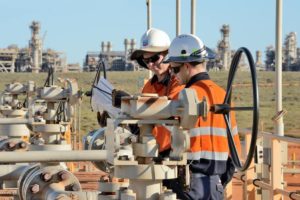The current fixation of governments, regulators and industry on the obvious blockages in the country’s planned transmission build is causing many to declare that the country’s 82 per cent renewable energy target is effectively dead in the water.
And they are acting accordingly. Many wind and solar projects are being pulled, not helped by complex connection rules that have impacted even the country’s biggest single wind precinct at MacIntyre in Queensland.
Transmission projects are being held up by bad planning, a bad regulatory environment, and problems with social license, supply chains and costs. Many different projects are facing delays of up to three years.
But despite the hand-wringing and the headlines from a media only too willing to tut-tut at the green energy transition and what some call “woke capitalism”, many in the renewables industry are pointing out that there is huge capacity for wind, solar and storage projects on local networks. If only they were used.
“Transmission is not the only solution to unlocking the network constraint that enables the energy transition,” says Jack Curtis, the head of smart technology firm Neara, which has recently unlocked data that shows significant untapped capacity on local networks.
“We’re going to have to build a lot of transmission. But if we only rely on that, we don’t get there,” Curtis said.
“We have a massive backlog of renewable projects – tonnes of sophisticated renewable developers who know what they’re doing and can bring online low cost generation, but you have this massive bottleneck in the network.
“So it’s partly true that the energy transition will be challenged by not having enough transmission. But I think the energy transition is at risk unless we find diversified paths to resolving this network availability constraint.”
Curtis’ views are supported by many others in the renewables industry. Steve Jackson, from the newly created BEA Renewables, and an experienced project developer, says distribution networks are being ignored.
“I’m a utility scale renewable energy developer so have a hugely vested interest in new transmission being built (albeit slowly and at huge cost),” he said in a LinkedIn post.
“It baffles me (well not really, it’s other vested interests) why there isn’t huge focus on unlocking the potential in the existing transmission and distribution networks.
“Essential Energy and Neara made a splash recently with their digital twin tech analysis looking at dynamic thermal ratings and what can be unlocked in that network.
“Radical data transparency has huge potential to facilitate massive amounts of opportunity for renewables and storage if it gets into the hands of those who can use it.”
That data speaks to one of the main problems in the renewables industry – the lack of access to data for renewable energy developers, who have to pay huge fees to the market operator to get the data to establish whether the project they are proposing is in a good part of the grid.
The ability to use battery storage as a “fill in” for the grid is also being promoted by the likes of Eku Energy, the Macquarie Group offshoot, which points out that it can enhance capacity as the battle to build transmission continues.
Greg Hannan, the head of network strategy and non-network solutions at CitiPower Powercor and United Energy in Victoria, says his companies see a huge role for medium-scale, or grid side distributed batteries in helping to accommodate all kinds of renewables.
“[Batteries] can not only help support reliability, but they can also help keep the power local – you might think that’s not that important but, you know, it does seem to be important for customers,” he told Australian Energy Week in Melbourne on Wednesday.
“People do like the idea of having access to local renewable energy, particularly rooftop solar, especially some people who don’t have the ability to have it for themselves for whatever reason.
“I think you’re going to start hearing a lot more from distribution networks on the amount of generation they host,” Hannan added.
“If you think there’s about 11GW of renewable generation in Victoria today, and distribution networks are hosting around about a third of that by capacity,” he says, noting that this takes in huge amounts of residential rooftop PV.
“We’re moving from dozens if not hundreds of power stations to millions of them distributed everywhere. And in aggregate, it’s quite a significant volume by capacity.
“Distribution networks not only need to do that safe, affordable, reliable power to homes and business but fundamentally there’s a role to enable generation,” Hannan said.
“An if we don’t play our part, then we’re actually holding back the net-zero transition. So that’s why this has become… a huge priority for our business.”
Neara’s Curtis says distributed networks offer lots of opportunities.
“It is becoming increasingly clear that … there is potentially an enormous amount of capacity that can be unlocked and utilised.
“That could potentially be anywhere in the realm of 5GW or more (in one network alone), which … wouldn’t require the same time scale that transmission projects would and potentially wouldn’t face some of the other constraints that transmission projects do.
“We need to find ways to make important transmission projects go ahead as efficiently and cost effectively as possible, and address other qualitative issues around social license. But I don’t think we have focused sufficiently on what can be done with the existing network.
“There’s a massive heavy lift that the existing distribution network can achieve. Across all lenses of renewables, large scale, centralised, small scale, centralised and distributed generation.”










